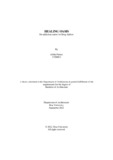| dc.contributor.advisor | Mallick, Fuad Hassan | |
| dc.contributor.advisor | Mahmudun Nobi, Abul Fazal | |
| dc.contributor.advisor | Kibria, Naim A | |
| dc.contributor.advisor | Kaikobad, S M | |
| dc.contributor.author | Farnaz, Afrida | |
| dc.date.accessioned | 2023-05-08T09:58:38Z | |
| dc.date.available | 2023-05-08T09:58:38Z | |
| dc.date.copyright | 2022 | |
| dc.date.issued | 2022-09 | |
| dc.identifier.other | ID: 17208011 | |
| dc.identifier.uri | http://hdl.handle.net/10361/18246 | |
| dc.description | This thesis is submitted in partial fulfillment of the requirements for the degree of Bachelor of Architecture, 2022. | en_US |
| dc.description | Cataloged from PDF version of thesis. | |
| dc.description | Includes bibliographical references (pages 104-105). | |
| dc.description.abstract | The number of drug cases increasing in Bangladesh is alarming. The police have taken the
initiative to set up rehabs in every district to reduce the number of addicts in the country.
Currently, there are only 328 treatment centers, and 23309 drug addicts receive treatment, but
according to sources, there are 7 million Drug addicts. New advanced drug treatment and
rehabilitation centers were built to provide and control this uprising demand for drugs. This
paper seeks to state how these drug addicts can be treated by allocating better living
conditions through spirituality and not segregating them from the community. With minimum
interaction with the outside world, this project aims to provide patients with an open
environment instead of confined spaces. The design approach helps to destigmatize the image
of the de-addiction center through curative architecture and intent to escalate the recovery
rate through therapeutic architecture. It is a rehabilitation center with a 250-bed treatment
center with ICU facilities. And lastly, help the addicts to heal and prevent further damages
caused by drug abuse through the power of architecture. | en_US |
| dc.description.statementofresponsibility | Afrida Farnaz | |
| dc.format.extent | 105 pages | |
| dc.language.iso | en | en_US |
| dc.publisher | Brac University | en_US |
| dc.rights | Brac University theses are protected by copyright. They may be viewed from this source for any purpose, but reproduction or distribution in any format is prohibited without written permission. | |
| dc.subject | Drug addicts | en_US |
| dc.subject | Rehabilitation center | en_US |
| dc.subject | Therapeutic Architecture | en_US |
| dc.subject | Healing | en_US |
| dc.subject | Community | en_US |
| dc.subject.lcsh | Drug addiction. | |
| dc.subject.lcsh | Drug addiction--Bangladesh. | |
| dc.subject.lcsh | Drug addicts--Rehabilitation--Asia--Congresses. | |
| dc.title | Healing Oasis: De-addiction center for drug addicts | en_US |
| dc.type | Thesis | en_US |
| dc.contributor.department | Department of Architecture, Brac University | |
| dc.description.degree | B. Architecture | |

